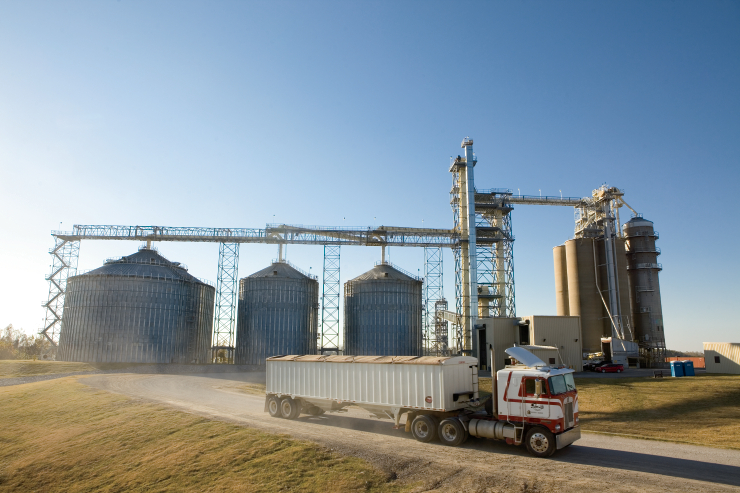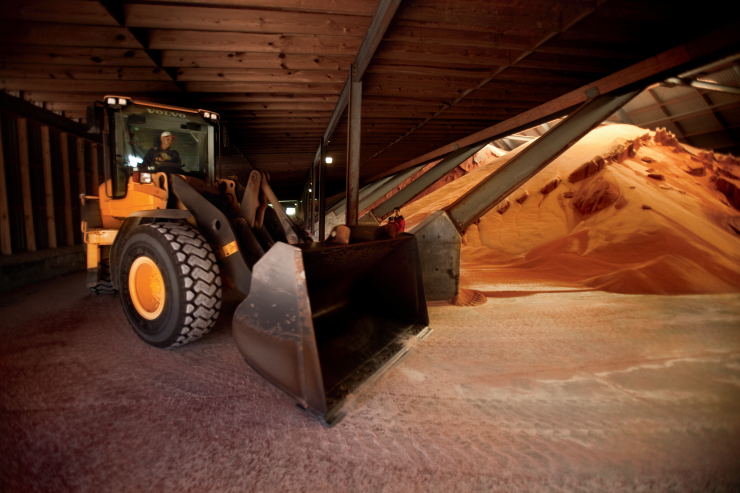Home > Tennessee > Tennessee Crops & Livestock > Effective Transportation Key for Tennessee Agriculture
Effective Transportation Key for Tennessee Agriculture
In partnership with: Tennessee Department of Agriculture

Just as in education, the transportation of agricultural products can be broken down by the three Rs: rail, roads and rivers.
“Agriculture really has a great interest in all modes of transportation,” says Ed Harlan, director of agricultural and forestry development for the Tennessee Department of Agriculture, “because it’s critical in getting inputs and supplies in, and getting grain, wood products and a lot of other ag products back out.”
Whether by trains on the Class 1 and short-line railways, by trucks on state and federal highways or by barges on main or secondary rivers, the daily movement of Tennessee agriculture products comes with plenty of success, as well as challenges.
“The river system is a great concern,” says Bart Krisle, CEO of the Tennessee Farmers Cooperative in LaVergne, specifically pointing out the recent Midwest drought’s impact on the Mississippi River.
“We’re very dependent on barges coming out of the Gulf of Mexico with fertilizer, and they have to come up the Mississippi, so it’s critical to us. It’s not just the water level and the rock situation that’s a concern. The lock and dam system in this country is old and in need of not only repair, but also, in my opinion, improvements and enhancements.”
To help with the low water issue as it relates to the transport of grain, Cargill, an international producer and marketer of agricultural and other products, completed a $25 million modernization project on its Hales Point grain elevator in Hallsin summer 2012. The enhancement will allow Cargill to increase the number of trucks that can unload each hour and load barges destined for the Gulf of Mexico faster, even when water levels are low.The Tennessee and Cumberland rivers have not been adversely affected by drought.

On Track
Short-line railways have become an increasingly important method of agricultural transportation over the last two decades, according to Harlan.
“I’m a big advocate for rail,” he says. “I think it’s important for agriculture. It’s better for farmers and agriculture to ship by rail, especially if it’s not time sensitive.”
Harlan says the short-line system in Tennessee began about 20 years ago after the Class 1 railroads had cut back on rural routes in favor of transportation between large cities.
“They didn’t have as much interest in putting together three cars here, four cars there,” Harlan says. “There was talk of abandoning these rail lines, and that’s why the short-line railroad system started.”
Tennessee has 16 short-line railroads, each delivering agricultural and other products across the state or to connections for Class 1 railways. The Nashville and Eastern, which runs from downtown Nashville to Monterey, is one example. Other towns served by short line include Columbia, Pulaski, Cookeville, Selmer, Lawrenceburg, Elizabethtown, McMinnville and Sparta.

Counting on Trucks
Timing is significant for Kent Lockridge, Co-op’s director of purchasing in the animal nutrition division (feed mills), and he says he’ll typically use trucks for his transportation needs.
“We have to deal with a ‘just in time’ situation quite a bit,” he says. “We have a lot of storage, but we go through a lot. At any point, we may have 24 hours or less of inventory and no more than two to three days to get it where it needs to go.”



